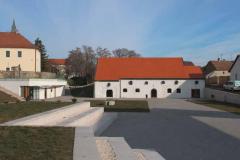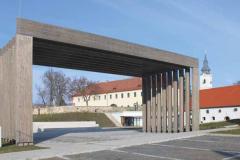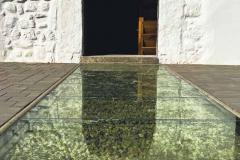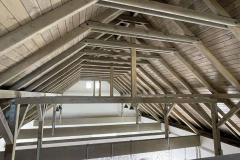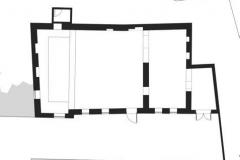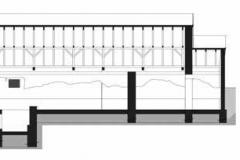Space, Material, Time
Reconstruction of the Former Monastery Mill in Pásztó
Architect: Gábor Sisák
Text: Anett Mizsei
Photos: Gábor Sisák
Pásztó is a town at the foot of the Mátra Hills, but still amongst the gentle slopes. The remains of its ill-fated monastery mill were recently taken over by architect Gábor Sisák ‒ and with him archaeologists, heritage engineers and structural engineers ‒ to create a new community space for the town, saving whatever can still be saved. In addition to its many virtues, the small-scale reconstruction has the cultural significance of moving the focus back on the once important ‘main square’. Although the newer institutional area has somewhat reversed this process of terracing, the atmosphere created here throughout history can still be felt when taking a tour of the site. We can hope that the revitalisation of this space will serve and shape the community in the long run.
Chief designer Gábor Sisák decided to rebuild the structure after archaeological and historical monumental research, based on the surviving parts of the 1888 plans. The exact building contours were found during the excavation, and the volume reconstructed on the basis of the existing plans not only became the focal point of the square once again, but it also shaped the square itself. A related construction project, a shop and café selling local produce hidden in a recess rising towards the monastery, created a new wall in place of the precarious, sloping recess, and responded to the earlier village street scenery by moving it into a more prominent position. The open-air stage, with its lightweight, wooden pergola structure, placed at a proportionate distance from the mill, and the grandstand, highlighted as a landform, are able to thematise the space as well as to lend it a function.
Architect: Gábor Sisák
Structure: Mária Bókáné Bakos
Monument history structural experts: Péter Rabb, Dániel Rabb
HVAC: Csaba Klagyivik
Electrical engineering: János Szpisák
Fire protection: László Hársfalvi
Building history expert: Csaba László

